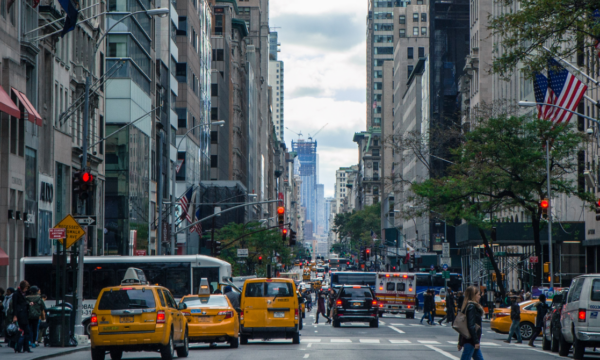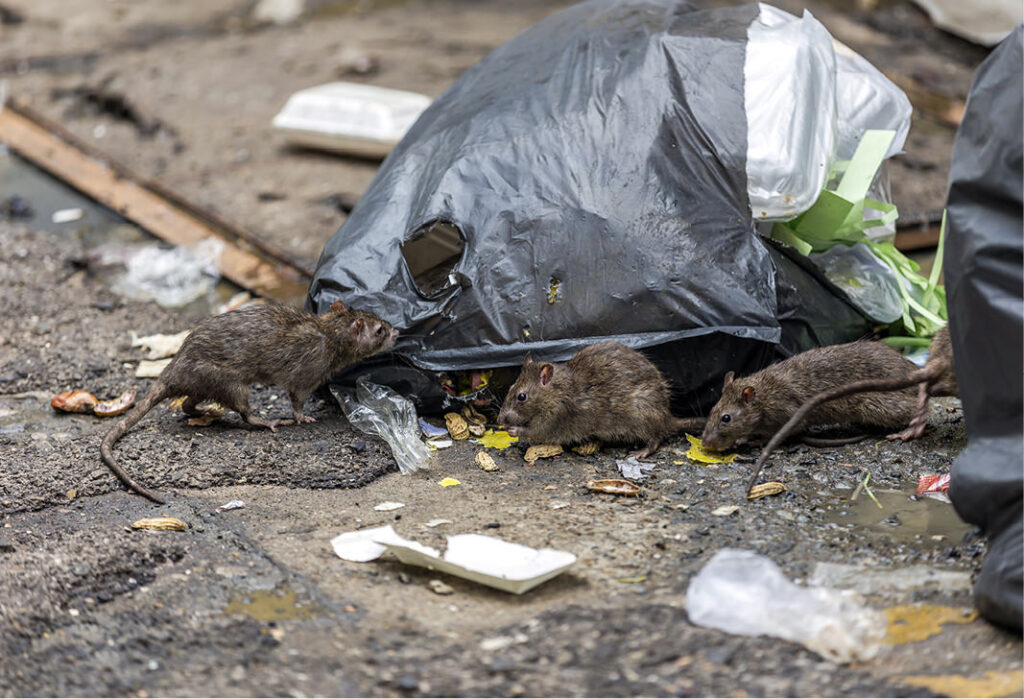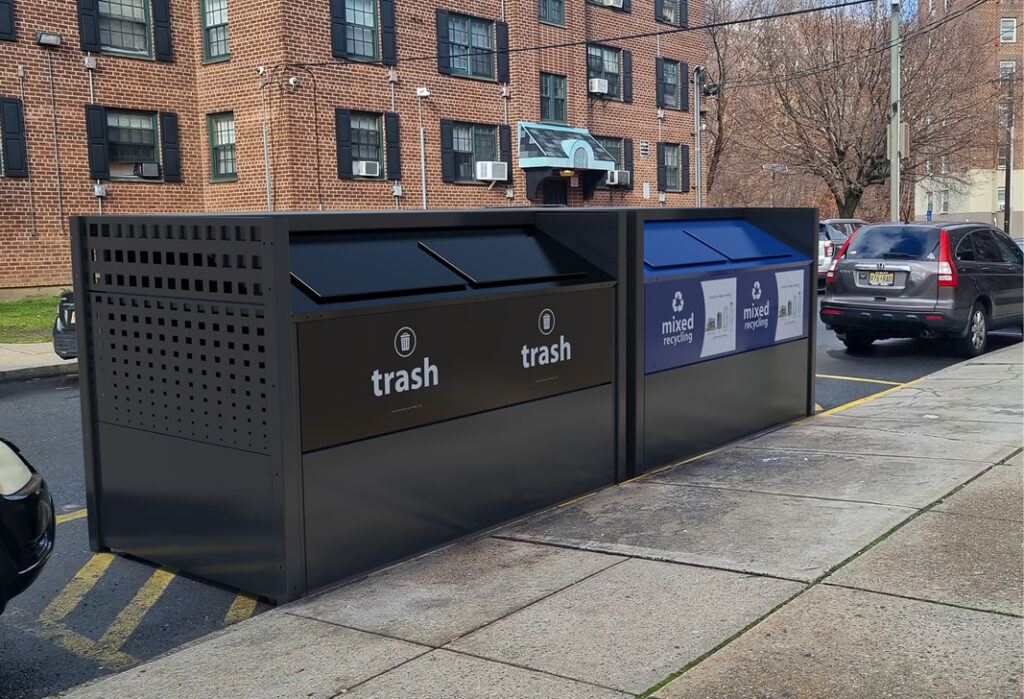

NYC’s Trash Revolution: Progress, Challenges and What’s Next
New York City is a city known for its rat population. In fact, recent data shows that it sits as the third “rattiest” city in the U.S., behind Chicago and Los Angeles. Rodent numbers are said to have surged dramatically in the years post lockdown, with as many as 3 million estimated rats in New York City in 2023; an increase of nearly 1 million over the last decade.
The city’s fight against its long-standing trash and rodent problem has entered a new phase. Following Mayor Eric Adams’ push for containerization, businesses and small residential buildings are now required to place their waste in secure, lidded bins.
Historically, NYC used traditional metal trash cans, à la Oscar the Grouch, until 1968 when a 10 day sanitation worker’s strike saw said trash cans overflowing to horrifying effect, with garbage spilling out and piling high across the city.
Reflecting on what came before Adams’ Trash Revolution, New York Public Library reports that, struggling to cope with the mountains of garbage flooding the streets during the 1969 strike, mayor at the time, John Lindsay, accepted a donation of 200,000 plastic bags from the chemicals industry as a stopgap containment measure.
The plastic bags were quieter, lighter and New Yorkers loved them! When sanitation workers returned to the job after the strike, they found the bags much easier to lift and manoeuvre. In response, city government lifted the trash can requirement and allowed plastic bags.
More than fifty years later, large piles, mountains, of trash bags had become part and parcel of the New York City streetscape, in contrast to most cities in the world which do not allow trash bags unfettered access to the streets.

In their report in early 2023, released just ahead of Adams’ initiative, NYC’s Department of Sanitation (DSNY) noted that the garbage was everywhere. Bags of trash were left out on curbs the night before pickup, proliferating the presence of rats, causing a public nuisance of trash mountains on sidewalks and leaving behind a soiled sidewalk long after bags had been picked up.
Shockingly, New Yorkers were leaving out 44 million pounds of waste every day of collection service, to the weight of 140 Statues of Liberty; a feast for vermin and a filthy, rotting obstacle course for pedestrians.
So, since taking office, Mayor Eric Adams committed to the citywide approach to containerization as part of the Administration’s ongoing efforts to “Get Stuff Clean.” Containerization is defined by DSNY as the storage of waste in sealed, rodent-proof receptacles rather than in plastic bags placed directly on the curb. Containerization is intended to mechanize waste collection, reduce the visibility of garbage set out in public spaces and reduce the presence of vermin.
The new rules, which went into effect in November, were phased in with a brief “warning period” for slow adopters, heralding the end of the city’s decades-old tradition placing trash bags directly on the sidewalk.
The move, designed to reduce rat populations and improve street cleanliness, has already shown results, but not without its challenges.
The crackdown officially began in November 2023, when businesses were required to start containerizing their waste. This was followed by the next major step on November 12, 2024, when residential buildings with 1-9 units also had to follow suit. Finally, on January 2, 2025, full enforcement went into effect, with fines starting at $50 for first-time violators, increasing to $200 for repeat offenses.
Since the implementation of stricter trash rules, sightings of rats in some areas have dropped. With 70% of NYC’s trash now stored in bins instead of piled on sidewalks, the city has taken a significant step toward reducing the food supply that fuels its rodent problem. Many residents and business owners report cleaner streets, fewer odours and less mess from scavenging pests. In some of the residential containerization pilot zones, sightings have fallen by an incredible 55% since the pilot began. DSNY reported in December 2024, that after containerization rules went into effect in April 2023, the city saw the largest year-over-year reduction in rat sighting Service Requests since 2010.
Sanitation workers have also adapted to the new system, streamlining collections where possible. In some neighbourhoods, the use of larger, communal ‘European-style’ dumpsters has proven effective in reducing sidewalk clutter while maintaining efficiency.
Additional strategies, such as fumigation using carbon monoxide, thought to be less harmful than traditional poisons, have been trialled in areas across the city after some success in Boston and San Diego. It was noted, however, by a local exterminator in Manhattan that “without better trash disposal, the rats “ain’t going anywhere – we could wipe out every rat in New York City. Give it a year, and they’ll all be right back.” It has been made clear that no amount of innovative extermination will defeat New York’s rats if the city doesn’t tackle the source itself.

The transition to containerization hasn’t been entirely smooth. The biggest issue remains where to put the bins. NYC’s narrow sidewalks, almost entire lack of alleys in Manhattan’s 1811 grid system and densely packed streets, make it difficult to store and manage waste efficiently. Some businesses, particularly those with storefronts in smaller buildings, struggle to find space to keep their bins between collection days.
Meanwhile, in some areas, curb lane containerization has clashed with parking needs, bike lanes and outdoor dining spaces. A 2023 sanitation report deemed some Manhattan streets unsuitable for dumpsters, as their installation would remove up to 25% of available curb space.
Public resistance has also been a factor. While many residents welcome cleaner streets, others complain about the inconvenience of keeping and managing bins in their already-cramped buildings. Some have even questioned whether the cost of purchasing compliant bins should have been covered by the city. NYC Bins, the official city-issued containers, are available for purchase now but won’t be required until June 2026, giving residents some time to adjust.

In December 2024, DSNY released draft rules which outlined the timeline and specific model under which Manhattan Community District 9 (Morningside Heights, Manhattanville, and Hamilton Heights in West Harlem, also known as M9) will become the first New York City Community District in which 100% of the trash is containerized – by June 2025.
As the city moves forward towards this goal, adjustments will be necessary as will milestones in progress and a continued drive. Future solutions may include expanding communal bin systems in areas where individual containers are impractical or increasing the frequency of waste collection to prevent overflow.
While containerization is proving to be a step in the right direction, finding practical solutions for NYC’s unique trash challenges remains crucial. Space constraints, logistical hurdles and public resistance mean that a one-size-fits-all approach won’t work. Fortunately, metroSTOR offers a range of solutions tailored to the complexities of urban waste management, whether it’s secure on-street dumpster enclosures, enclosed trash cans, communal waste hubs or access-controlled organics bins. As Manhattan Community District 9 prepares to become the first fully containerized district, the question is, will the rest of NYC be ready to follow?